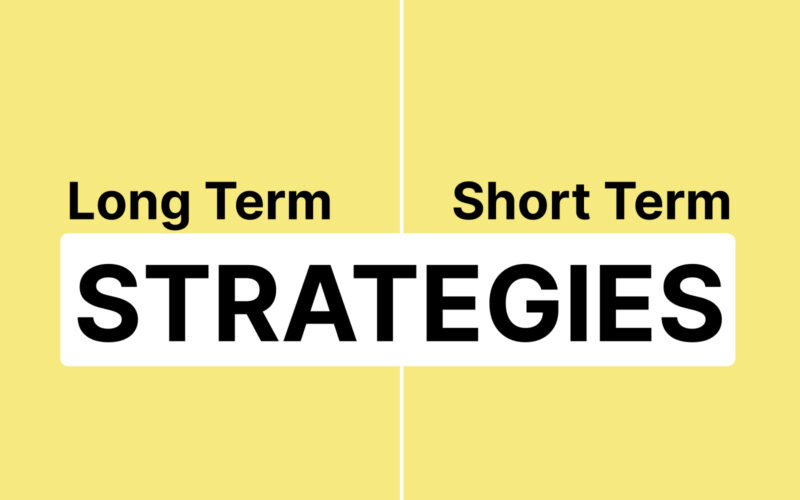Right now, XRP is one of the most talked-about cryptocurrencies in the world, and it’s not hard to see why.
Designed with utility in mind, it offers fast and low-cost cross-border payments. Moreover, thanks to its connection with Ripple Labs, XRP has now been adopted by a range of global financial institutions, which is why it is currently shining within the crypto space.
As you might expect, with all the buzz around XRP, it is naturally attracting more and more investors. Many of whom ask themselves the same question. Namely, should they treat it as a short-term opportunity or a long-term investment?
In this guide, we’ll attempt to provide you with some clarity by highlighting the risks and rewards of both strategies. Hopefully, it will help you decide which one best aligns with your financial goals.
What Is XRP and Why Do Investors Care?
XRP is the native digital currency of the XRP Ledger, a blockchain designed to support efficient and scalable global payments. Unlike Bitcoin, which is mainly viewed as a store of value, XRP is designed for speed and functionality in real-world financial systems.
What gives XRP an edge is its relationship with Ripple Labs. Ripple works with banks and financial institutions to improve the speed and cost-effectiveness of international transfers. This practical utility makes XRP a much more attractive proposition to many in comparison to other speculative coins.
However, that is not to say that XRP has not faced its fair share of drama, particularly the ongoing high-profile legal case between Ripple and the US Securities and Exchange Commission (SEC).
While this lawsuit has created price uncertainty, many investors believe a favourable outcome could majorly boost XRP’s value.
Australian Crypto Wallet
Before looking at the different XRP investment strategies you can adopt, it’s worth thinking for a moment about where you’ll store your investment. It doesn’t matter if you’re holding XRP for a few hours or a few years; having a secure wallet is absolutely vital.
If you’re unsure where to start, the Australian crypto wallet guide by Independent Reserve is a great resource. It compares the best wallet options available to Aussie investors, which should help you find a secure and reliable way to manage your crypto assets.
Short-Term vs Long-Term Strategies
If you are interested in investing in XRP, there are essentially two ways to do this. Either over the short term or long term. Here are the main differences between the two.
Short-Term XRP Investment Strategies
If you’re drawn to action-packed price charts and thrive on market movement, a short-term trading approach may be for you. XRP is known for its volatility, which can present regular trading opportunities for savvy investors.
Day trading and swing trading are the two most common short-term methods. The main difference between the two is that day traders buy and sell within the same day, hoping to capitalise on quick price moves, while swing traders hold their positions for days or weeks to take advantage of broader trends.
Many traders use tools like RSI (Relative Strength Index), MACD (Moving Average Convergence Divergence), and candlestick patterns to make investing decisions. Additionally, some advanced traders use leverage to magnify potential returns. However, this comes with greater risk and isn’t recommended for beginners.
Overall, short-term trading can be rewarding, but it’s also stressful and requires constant monitoring. It’s also important to set stop-losses and manage your risk properly to avoid big losses.
If you’re not willing to stay glued to price charts, this strategy might not be best for you.
Long-Term XRP Investment Strategies
If you prefer a more hands-off approach, then long-term investing, or “HODLing”, could be a better fit. Indeed, many Australians believe in XRP’s long-term potential, especially if Ripple continues expanding its global partnerships, so they are staying loyal to it.
The simplest long-term strategy is to buy and hold, which involves purchasing XRP and waiting for future growth without getting caught up in daily market noise. That said, some investors complement this with dollar-cost averaging (DCA), which is investing a set amount regularly, regardless of market price. This reduces the impact of short-term volatility.
For long-term holders, security is especially important. For this reason, many investors consider moving their XRP to a cold wallet, which is a hardware device that stores your crypto offline. This adds a strong layer of protection against hackers or exchange failures.
It is worth noting that just because you are investing in the long term, it doesn’t mean it is without risks, too. Crypto markets are unpredictable, and holding over time doesn’t guarantee profit. That said, it is a fairly solid option for those who believe in XRP’s future.
XRP Market Trends and Timing Your Entry
Timing your investment can make a big difference, especially in a market as dynamic as crypto.
XRP has seen dramatic price movements over the years, hitting all-time highs during crypto booms and dipping sharply during bear markets. Therefore, when deciding when to buy, look at XRP’s price history, overall crypto market trends, and breaking news to determine if now really is the best time to do so.
If you use tools like Trading View charts, social sentiment trackers, and XRP market analysis platforms, they can help you make smarter and more strategic timing decisions.
While nobody can predict the future of any crypto, they help you take away much of the guesswork, which is why they are so useful..
Where to Buy and Store XRP in Australia
Thanks to a growing number of local crypto exchanges, getting your hands on XRP is easier than ever in Australia. Some popular options include Independent Reserve, CoinSpot, and Swyftx. All of which are known for their strong security, transparent fees, and easy onboarding process for beginners.
When it comes to storage, you have two main choices available to you: hot wallets and cold wallets. The former are connected to the internet and are suitable for active traders, while as the latter are an offline solution, they are more secure for long-term storage.
Some Australians use a mix of both, which usually involves keeping a small amount in a hot wallet for quick access and the rest secured offline. If you do this, don’t forget to set up two-factor authentication (2FA). You are also recommended to keep backups of your wallet recovery passwords as well.

